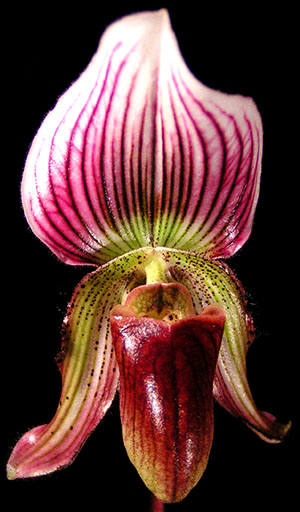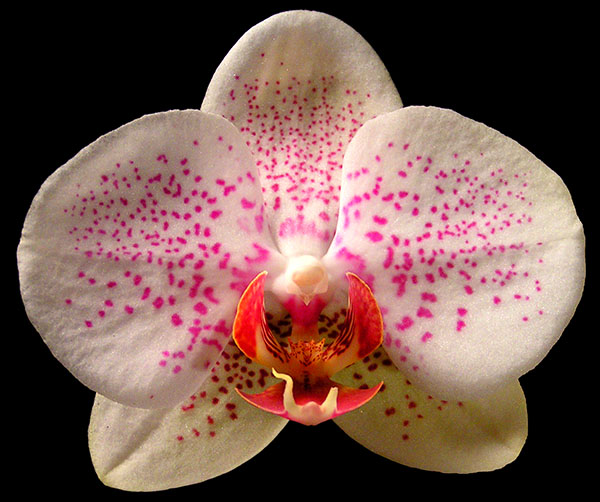Today, the last of November, beginning of December, snow is flying in many parts of the USA. Many die-hard gardeners in colder areas turn to houseplants to satisfy that perennial itch to commune with the green world. These days it seems you find lots of houseplants for sale wherever you go. Many grocery stores, even big box stores, now boast a tantalizing display of gorgeous exotic orchids in full bloom along with other houseplants. The flamboyant color and opulent form of orchid flowers are seductive. Like sultry temptresses they lure us into their embrace and many of us succumb to their charms.
For many people, orchids have the reputation (undeserved!) that they are demanding and difficult to grow. Poppycock! Orchids are tough customers that hang on under the most trying of circumstances so long as minimal needs are met. The only finicky aspect of orchid culture is the potting medium because they cannot grow in soil.
Many orchids make excellent flowering houseplants. Take a word from the wise and be careful though, because once you start growing orchids you may never stop! At one time in our lives Kathryn and I owned an orchid nursery and tissue culture lab in Hawaii with several thousand orchids. We were also judges with the American Orchid Society and we literally lived and breathed orchids for years.
In general, the two kinds of orchids that are the easiest to grow in the average home are Phalaenopsis (moth orchids) and Paphiopedilum, (lady slippers). Both of these types of orchids prefer bright indirect light, not full sun, and are pretty well adapted to the light levels and night time temperatures in your living room. Moth orchid and lady slipper flowers last an incredibly long time too, six months or more. They’re quite different in appearance: moth orchids are elegant and refined, and lady slippers are bizarre and fascinating.
Moth orchids in their native habitats in tropical Asia live perched on tree branches (they’re epiphytes) like many other tropical orchids. Their roots need a potting medium that drains rapidly but is able to retain some moisture, conditions satisfied by a simple fir bark medium. Never pot them in soil, it will kill them!
Lady slippers also come from tropical Asia but they live on the forest floor, not up in the trees. Because they are terrestrial, their roots need a potting medium that retains moisture well. Pot them in a mix that contains a lot of coarse peat moss or bark fines and they’ll do well. Again, never pot them in soil, it will kill them!
Some types of orchids, such as cattleyas, dendrobiums, cymbidiums, and oncidiums, have water storage structures like pseudobulbs. But neither moth orchids nor slipper orchids have any water storage capability. Since they can’t store water they need regular watering and shouldn’t dry out for too long. Water about once a week by holding the pot under the kitchen faucet, then let it drain. Increase the watering to twice a week if the weather is warm and dry. Fertilize with a weak water soluble orchid fertilizer made at one quarter strength every time you water. Never put the pot in a saucer where it stands in water, because the roots will all die if they are constantly wet.
If you meet these few basic needs for your orchids they will live for years, flowering regularly for you. Next time you are tempted to pick up a moth orchid or a lady slipper from the supermarket, do it. You won’t regret it.




Great information on orchids. You make growing them sound do-able. Got any suggestions for watering when I am traveling–besides a house sitter?